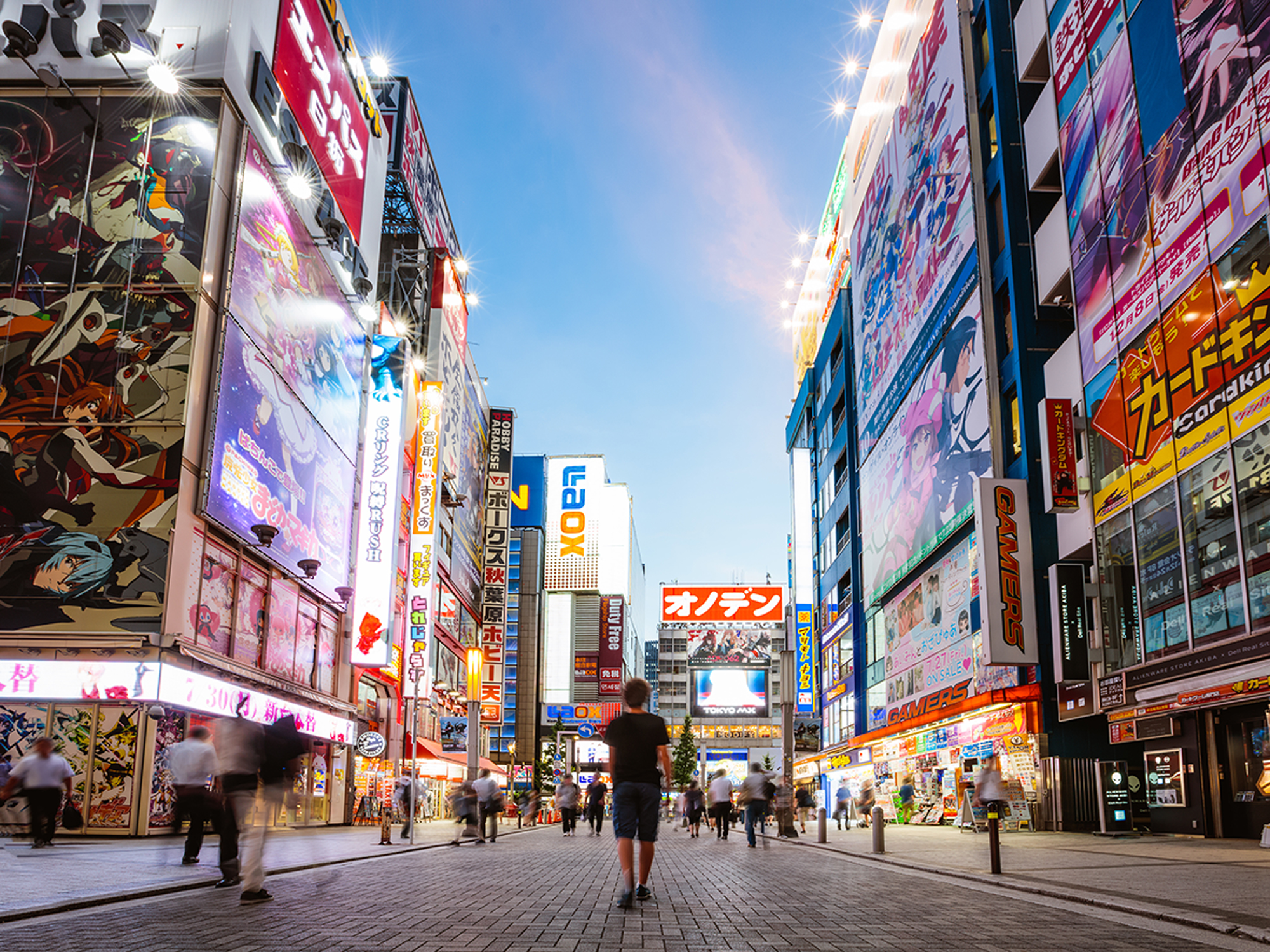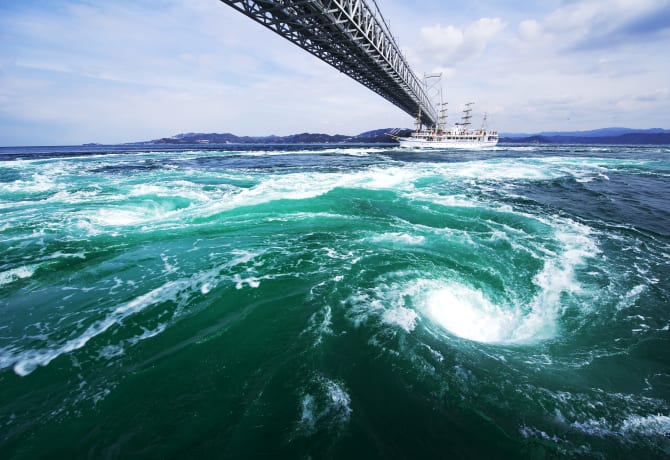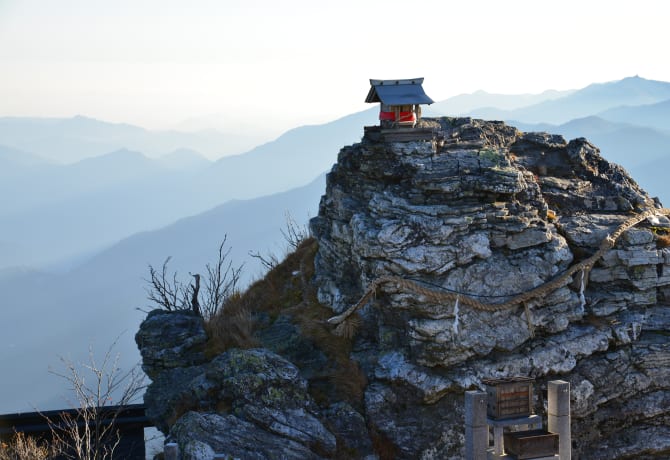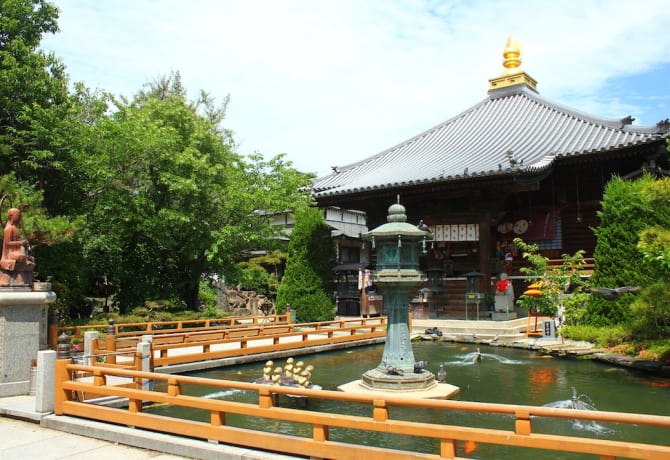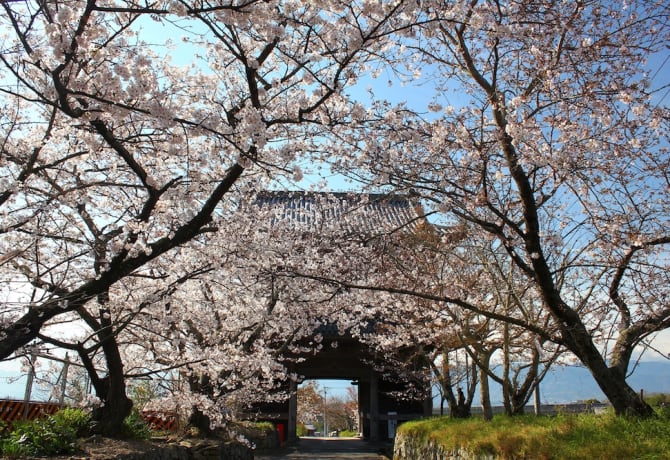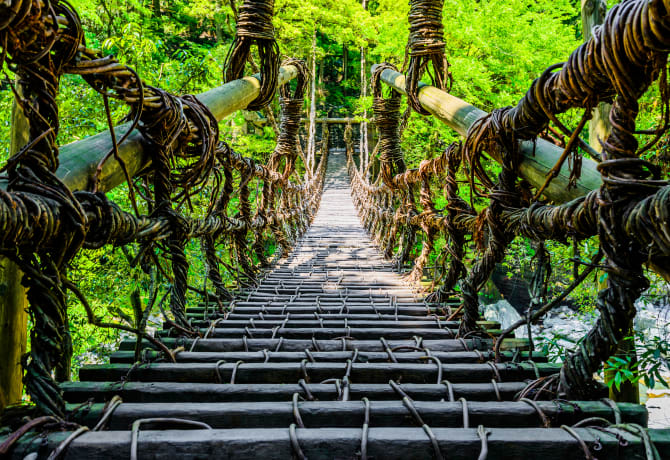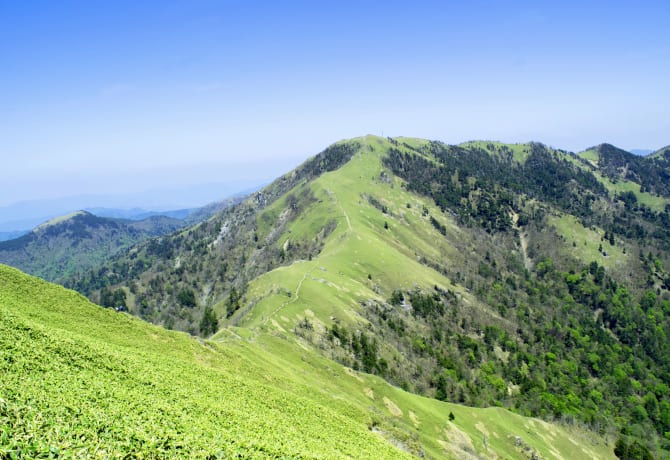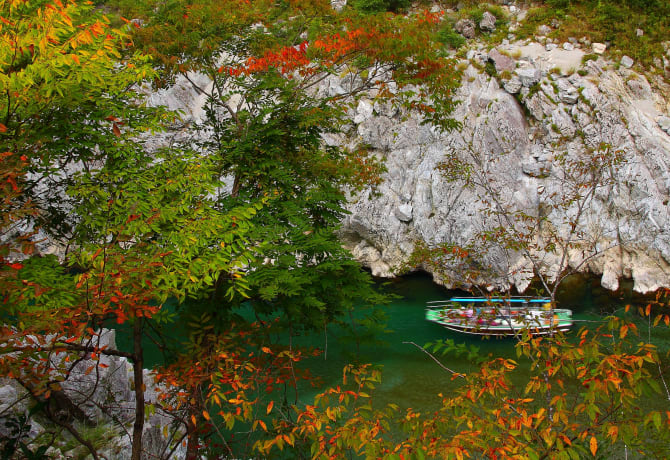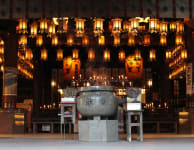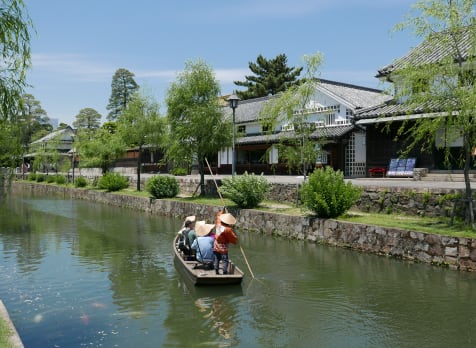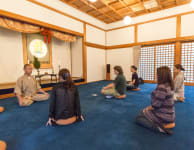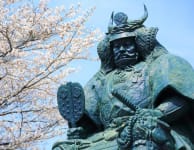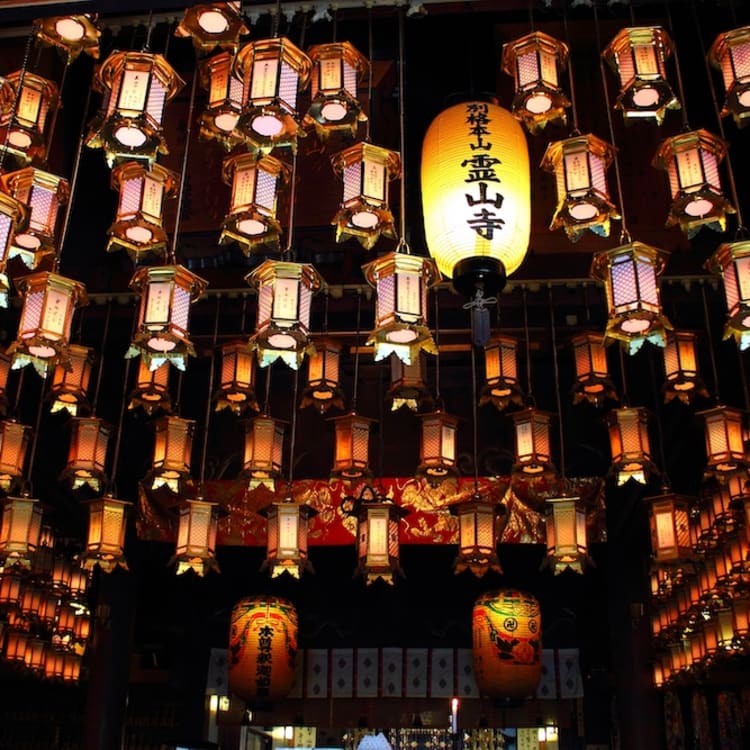

ITINERARIES A 2-Day Pilgrimage in Shikoku Follow the path of esteemed Japanese Buddhist monk Kobo Daishi towards enlightenment
Shikoku is best known for its 88 temples associated with Kukai, posthumously known as Kobo Daishi (774–835). Men and women of all ages have walked the pilgrimage trail for over 1,200 years.
Highlights
- Experiencing the life of a pilgrim by tracing the path of an enlightened Japanese Buddhist monk
- Exploring one of the least traveled prefectures in Japan
Tokushima , located on the eastern part of Shikoku , is surrounded by mountains on three sides with verdant forests and magnificent gorges, with pristine beaches along its coast. Notable sightseeing spots include the Naruto area which is home to whirlpools, as well as the Seto Inland Sea National Park.
At Ryozenji Temple, or Temple No. 1, you may purchase all the items you need for your pilgrimage. These include canes and white robes if you wish to fully immerse yourself in the experience, though there is no rule demanding that the full attire must be worn on the route.
The temple was founded by the Japanese Buddhist priest Gyoki Bosatsu (668—749). Kobo Daishi later came to pray for farmers stricken by natural disasters or illness.
15 minutes
Temple No. 2, Gokurakuji Temple, has a history of around 1,200 years. This is where you can pray for the safe delivery of children.
Legend also has it that if you touch the large cedar tree within the premises of the temple, dubbed the Cedar of Longevity, you will be blessed with a long life. The tree is over 1,200 years old and is said to have been planted by Kobo Daishi.
35 minutes
According to myth, when Kobo Daishi dug a well for villagers who were suffering from drought on the premises of the Konsenji Temple, or Temple No. 3, holy water spouted out and blessed them with longevity.
1 hour 7 minutes
Dainichiji Temple is also known as the temple of serenity for its quiet natural environment surrounded by forests on three sides. The Dainichiji Temple, Temple No. 4, is home to 33 Kannon statues enshrined in the corridor connecting the Main Hall to the Taishido Hall.
26 minutes
Temple No. 5, or Jizoji Temple, is where Kobo Daishi is said to have carved a statue of victory in battle—known as the Shogun Jizo Bosatsu. This has been enshrined as a holy object. Legend has it that because the statue has the word "shogun" in its name, the temple is regarded highly by warlords including Minamoto no Yoritomo—who established the Kamakura Shogunate.
In the Okunoin (Rakando) Hall of the temple are statues upon statues of the disciples of Buddha, each with a different expression. While there were meant to be 500 life-sized wooden statues, hence its name, only 200 remain today due to an accidental fire in 1915.
65 minutes
This is the place where Kobo Daishi discovered a hot spring that is said to be effective in curing all illnesses. There is a guesthouse in the grounds where you can spend the night.
13 minutes
Pray for better eyesight at Jurakuji Temple, or Temple No. 7, which has gained popularity among pilgrims with eyesight problems. This temple complex was at one point much larger, but many of its buildings had burned down in a large fire in the 16th century.
50 minutes
The Kumadaniji Temple, or Temple No. 8, boasts what is considered to be the largest Niomon gate among all 88 temples on the Shikoku pilgrimage route. If you visit in early spring, you will be wowed by the cherry blossoms in full bloom.
32 minutes
The final stop of this tour is Horinji Temple, or Temple No. 9, which is the only temple out of the 88 sites with a statue of the reclining Shaka Nyorai Buddha. The statue, carved by Kobo Daishi, is said to have healing properties.
After Horinji, it's possible to continue on the Shikoku Henro to Kirihataji Temple, Temple No. 10. Alternatively, you can return to Tokushima Station where you can catch express trains to other Shikoku destinations or return to the main island, Honshu.
Deemed one of the least explored regions in Japan, you will be blown away by the stunning vistas in the Iya Valley . As you travel along the winding roads deep into the valley, you will encounter sights such as the Statue of the Peeing Boy. According to local legend, young daredevils in the past would urinate off the rock, standing by the edge of the cliff, in an act of bravado. There is also a 45-meter suspension bridge, Iya Kazurabashi , made entirely out of vines as you near the bottom of the valley.

















































